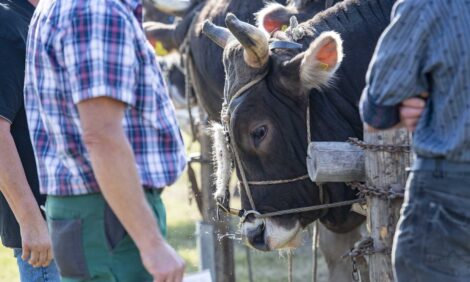



Cattle In The Netherlands
The Dutch cattle industry focuses primarily on the production of milk, but also supplies high-quality meat. Part of the meat production originates from specialist cattle farms (fattening bulls, suckler cows), but most of it comes from dairy cows.Dutch beef thanks its reputation not only to its nutritional and culinary qualities, but also to the reliable and controlled production process. A tried and tested method of tracking and tracing and independent quality inspections allow meat to be traced from the point of sale right back to the source.
After they have been born the animals are marked with an ear tag, so the place of birth and the location where they are raised is known. When the animals are taken to slaughter, the farmer supplies Voedselketeninformatie (Food Chain Information) (VKI) with specific information about the animals. This provides information such as from which animal the meat originates, the parents of the animal, the farm on which the animal was raised and where the raw materials used in the feed originated from. This registration and the codes enable the origin of the final product to be traced at all times.
Larger herds
The Agricultural Census registered a population of 3.97 million cattle in April last year. This is two per cent more than the previous year. The number of dairy cattle saw a small increase to reach 1.49 million animals.
Much higher production
According to preliminary figures, at 181 million kg beef production in 2009 showed a marked increased compared to 2008 (+15 per cent). The number of cow slaughtering greatly increased. The poor prices in the dairy sector meant that more cows were taken to slaughter. The dairy cow population grew in recent years due to a relaxation in the European quota.
A far higher import volume of namely Belgian cows for slaughter also played a role. In addition many farmers got rid of animals sooner than in 2009, as the slaughter premium no longer applied. The number of slaughtered fattening bulls remained stable last year.
Lower producer's prices
The greater number of cows being slaughtered led to lower prices. The average price dropped by approximately 10 per cent. The price of bulls also fell, but less steeply. The supply of beef cattle on the European beef market was not particularly large. EU-production fell to a slight extent, while less meat was imported from Brazil.
Higher exports
Dutch exports of beef increased again in 2009 and reached 226 million kg; approximately six per cent more than in 2008. France and Germany were again the most important destinations. Taken together, these countries account for almost half of Dutch beef exports. Exports of cattle, mainly comprising breeding stock, started to rise again following the lifting of the trade restrictions that had been imposed due to bluetongue.
Slightly lower imports
In 2009 slightly less beef was imported than in the previous year. The import volume decreased by two per cent to 335 million kg. Germany remained far and away the most important supplier of beef. More then 30 per cent of the beef imports originated in Germany. Poland followed with a share of 15 per cent. Due to the outbreaks of animal diseases in parts of Brazil, imports from Brazil fell even more last year. Many Brazilian beef producers failed to meet European demands regarding the traceability of animals.
Consumption
Beef consumption remained stable last year at 17.5 kg per head. Consumption of beef in restaurants noted a fall as a result of the economic recession, but this was balanced out in volume by higher purchases of minced beef and ready to cook beef products for use at home.


